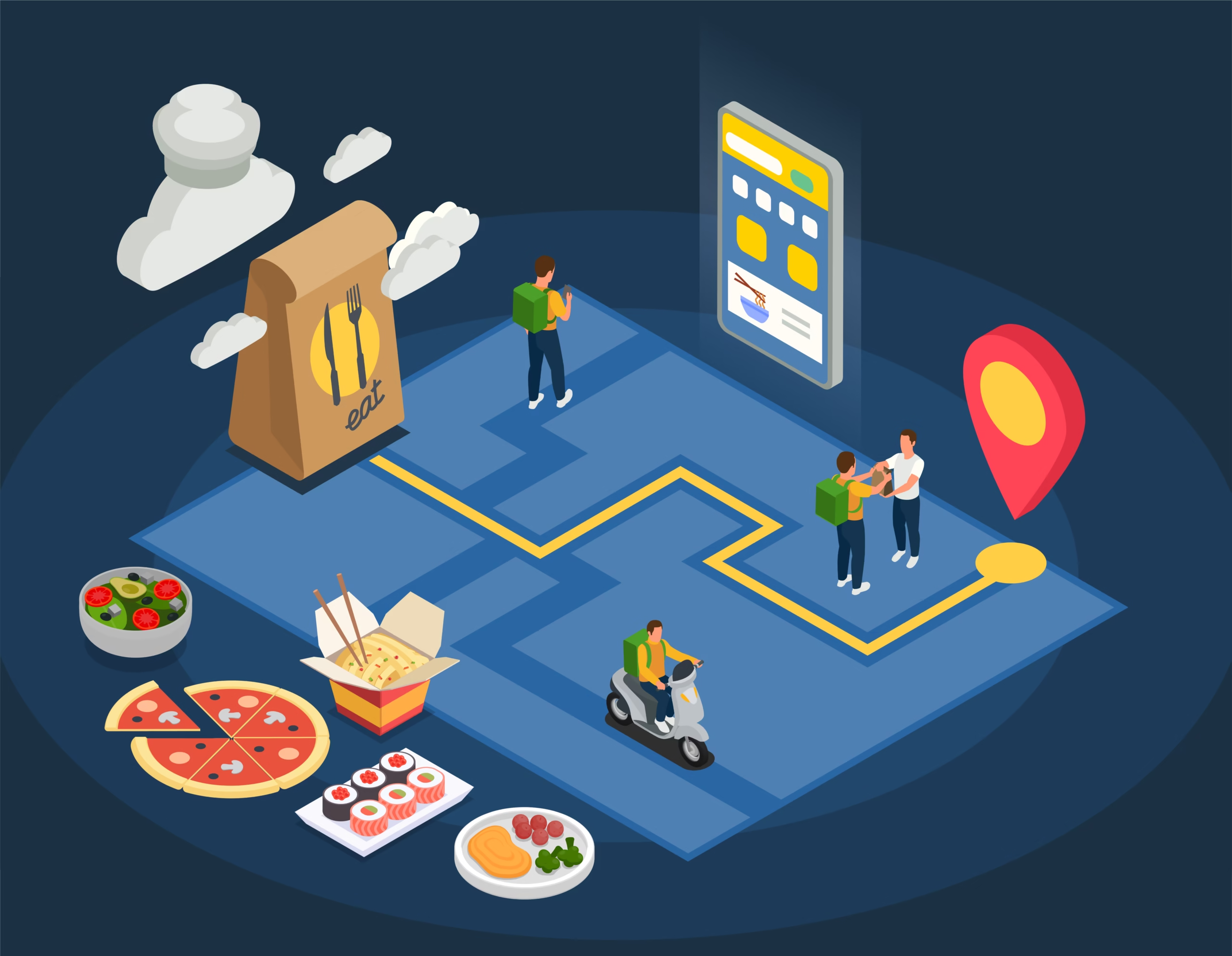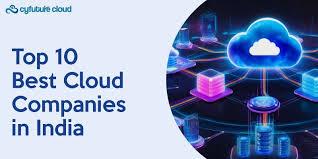Introduction
The emergence of cloud kitchens and the increasing dependence on food delivery applications have drastically changed the food sector. These platforms are now essential tools for optimising operations, improving client experiences, and increasing profitability—they are no longer only middlemen linking eateries with patrons. Because they lack traditional dine-in facilities, cloud kitchens rely significantly on food delivery applications to be efficient and meet the growing demand for convenience in the food service industry. In order to ensure long-term growth and success in this cutthroat sector, this article examines practical ways to use food delivery applications to optimize your cloud kitchen operations.
Understanding the Role of Food Delivery Apps in Cloud Kitchens
The Rise of Cloud Kitchens
A major change in the food business is represented by cloud kitchens. These virtual kitchens eliminate the need for a real dine-in area by concentrating only on preparing meals for delivery. By leveraging a cloud kitchen food delivery app solution, business owners can streamline operations, enhance efficiency, and ensure timely deliveries. Because of this model’s affordability, business owners may spend their money on high-quality materials and technology instead of pricey real estate. The desire for convenience, particularly among younger populations that value speedy, seamless food delivery experiences, is driving the rising popularity of cloud kitchens.
Key Features of Food Delivery Apps
A variety of features designed to meet the requirements of cloud kitchens have been added to food delivery apps throughout time. These applications provide real-time order tracking, centralised order administration, integrated customer feedback, and comprehensive analytics. They are the foundation of a cloud kitchen’s operations, offering resources that boost productivity, raise client happiness, and guarantee on-time delivery. A cloud kitchen can manage large order quantities with the correct app without sacrificing product or service quality.
Streamlining Order Management
Centralized Order Handling
It might be difficult to manage orders from several platforms, particularly during busy times. Food delivery applications streamline the process and lower the possibility of mistakes by combining all orders into a single dashboard. By ensuring that every order is processed precisely and quickly, this centralised method increases consumer loyalty and trust. Cloud kitchens are able to concentrate on providing outstanding food quality and service by simplifying order administration.
Automated Processes
Cloud kitchen automation is revolutionary. Automated notifications for order confirmation, preparation status, and delivery updates are made possible by food delivery applications. Employee workload is lessened, human error is reduced, and total service speed is increased. Better resource allocation is another benefit of automated systems, which guarantee the seamless and effective functioning of the kitchen.
Enhancing Inventory Management
Real-Time Inventory Tracking
An essential component of managing a successful cloud kitchen is inventory control. Real-time stock level updates can be obtained by integrating food delivery applications with inventory management systems. Kitchen managers can keep an eye on ingredient usage, spot low-stock goods, and quickly restock supplies due to this connectivity. By lowering the possibility of running out of essential supplies, real-time tracking guarantees that the kitchen can promptly satisfy consumer requests.
Data-Driven Decisions
For inventory management to be effective, client preferences and order trends must be examined. Apps for food delivery offer useful information on the most popular recipes and ingredients. Cloud kitchens can use this information to cut waste, maximise inventory purchases, and concentrate on developing dishes that appeal to their target market. Kitchens may run more profitably and effectively by matching inventory to customer preferences.
Improving Delivery Efficiency
Optimized Delivery Routes
The foundation of a successful cloud kitchen is delivery efficiency. Advanced algorithms are used by food delivery applications to identify the most efficient and economical delivery routes. These streamlined routes save operating expenses, improve customer happiness, and shorten delivery times. In addition to ensuring that food arrives fresh and in ideal condition, efficient routing also enhances the consumer experience.
Driver Performance Monitoring
For cloud kitchens, having a dependable delivery fleet is crucial. Apps for food delivery offer the ability to measure delivery timings, keep an eye on driver performance, and pinpoint areas in need of development. Kitchen managers may improve driver productivity by evaluating this data and putting initiatives into place like more training or rewards for on-time delivery. Sustaining high levels of client satisfaction requires a delivery staff that is effectively managed.
Boosting Customer Engagement
Personalized Marketing
Building brand loyalty in a competitive market requires active customer interaction. Personalised marketing efforts based on customer data are made possible by food delivery apps. Apps, for instance, might provide personalized recommendations, discounts, and promotions based on user preferences. In addition to improving client retention, personalised marketing raises order quantities, which boosts kitchen income.
Loyalty Programs
Rewarding loyal consumers and fostering enduring connections are two successful goals of loyalty programs. Food delivery applications might include loyalty features that let users accrue points or get discounts for placing repeat orders. These initiatives foster a feeling of worth and gratitude, increasing the likelihood that clients will pick your cloud kitchen over rivals.
Leveraging Data Analytics
Actionable Insights
For cloud kitchen operations to be optimised, data analytics are essential. Order frequency, peak hours, and client preferences are just a few of the parameters that food delivery applications may analyse in great depth. These insights assist kitchen managers in pinpointing areas that require improvement, streamlining their menu selections, and increasing overall productivity. Cloud kitchens can make well-informed decisions that promote expansion and profitability by utilising data analytics.
Predictive Analytics
Data-driven decision-making is elevated by predictive analytics. Food delivery apps can predict future trends, such seasonal demand or popular menu items, by examining historical data. Cloud kitchens may better organise their operations with the use of this information, making sure they are ready to satisfy client demands and seize new chances.
Ensuring Consistent Quality
Standardized Processes
Maintaining consistency is essential to developing a solid reputation for your brand. By offering thorough order instructions, cooking tips, and packaging specifications, food delivery applications can aid with process standardisation. Regardless of order volume or time constraints, standardisation guarantees that every meal satisfies the same exacting criteria for quality.
Customer Feedback Integration
In order to maintain quality and improve operations, customer feedback is crucial. Customers can score their experience and leave comments on food delivery apps, which frequently have feedback options. Kitchen managers can use this input to pinpoint areas that need work and make adjustments that will increase patron satisfaction.
Expanding Market Reach
Partnerships with Multiple Platforms
Expanding your clientele can be accomplished by collaborating with several food delivery services. You may boost order volumes and attract a larger audience by listing your cloud kitchen on multiple applications. Diversifying your presence will guarantee that your kitchen stays visible and competitive, as each platform has its unique user base.
Targeting Niche Markets
Cloud kitchens can serve specialised markets like vegan, gluten-free, or organic meals with the use of food delivery applications. You may distinguish your brand and build a devoted clientele by focussing on niche markets. Offerings that are tailored also enable you to charge more, boosting your profit margins.
Reducing Operational Costs
Lower Overhead Expenses
In addition to the cost-effectiveness of the cloud kitchen model, food delivery applications also cut costs by optimising operations. Significant cost savings are achieved by reducing the need for additional staff and resources through features like automated order management, inventory tracking, and delivery optimisation.
Energy Efficiency
Numerous food delivery applications offer information on energy usage, which aids cloud kitchens in finding methods to lessen their influence on the environment and cut electricity costs. In addition to saving money, implementing energy-efficient procedures improves your brand’s reputation by attracting eco-conscious consumers.
FAQs
1. How do food delivery apps help in streamlining cloud kitchen operations?
Food delivery apps centralized order management, automate processes, and provide real-time updates, making operations more efficient and reducing the chances of errors.
2. Can food delivery apps improve customer retention?
Yes, features like personalized marketing, loyalty programs, and quick delivery options enhance customer satisfaction and encourage repeat business.
3. How do food delivery apps contribute to cost savings?
By optimizing delivery routes, reducing inventory wastage, and automating processes, food delivery apps significantly cut operational costs.
4. What role do analytics play in cloud kitchen optimization?
Analytics provide insights into customer behavior, operational performance, and market trends, enabling data-driven decisions that improve efficiency and profitability.
5. Are food delivery apps suitable for small cloud kitchens?
Absolutely. Food delivery apps are scalable and provide tools that help small cloud kitchens compete effectively in the market.
6. How can food delivery apps help in managing peak hours?
By automating order processing and optimizing delivery schedules, food delivery apps ensure that peak-hour demands are met without compromising quality or efficiency.
Conclusion
In today’s fast-paced food sector, integrating meal delivery applications with cloud kitchen operations is no longer an option—it is a need. Numerous tools and features that improve customer satisfaction, cut expenses, and expedite procedures are available in these apps. Cloud kitchens may increase market reach, streamline operations, and cultivate a devoted clientele by using the potential of meal delivery apps. Adopting these tactics will set up your cloud kitchen for long-term growth and profitability, regardless of your level of experience.




